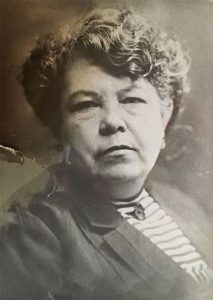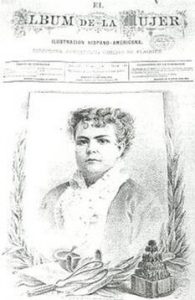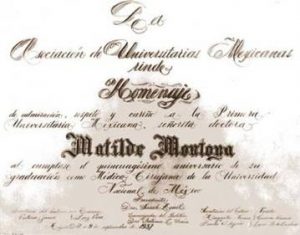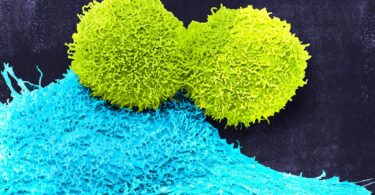Matilde Petra Montoya Lafragua is said to be the first Mexican woman who qualified as a physician. During her years of education she had to face a variety of adversities to finally reach her goal of becoming a physician. This was at a time when this profession was only practiced by men and when the typical role of a woman constituted caring for the family and household. Historically, there has been a monopoly of knowledge, being exclusively in the hands of men and the social upper classes to maintain their power and influence. So it was no exception that during the colonial era and the first years of Mexico’s independence, the majority of Mexican women didn’t receive any education. Only some of the middle or upper class women were taught manual tasks, cooking and, at the best a little about math, reading or writing. With ternacity and perseverance Matilde Montoya broke the chains of her time and affronted the rejection of the conservative society, paving the way for women who had hitherto been barred from entering the medical profession. She also practiced homeopathy.
Matilde Montoya was born on the 14th March, 1857, in Mexcio City, being the daughter of Soledad Lafragua and José María Montoya. She had two siblings, her elderly brother, who was given to the paternal grandmother right at birth because of being male, and her sister, who died early. Her mother was from Puebla, and when she became an orphan she was sent to the teaching convent in Mexico City where she learned to read and write. Matilde’s father was a conservative militar. He did not allow his wife to leave home, so that she dedicated all her time to little Matilde and taught her like an only child what she herself had learned when being at the convent.
Matilde was highly intelligent and from an early age she showed an interest in scientific knowledge. She could already read and write at the age of four and became an avid reader. Her father did not understand her interest in studying and often got upset with his wife, because he did not find any meaning in educating his daugther. Nevertheless he paid for her classes.
Matilde finished her education at the age of 11, being too young to enter higher education. With the help of private teachers paid for by her family, she finished her preparation and took the official exam to become a primary school teacher at the age of 13, which she passed without difficulty. However, she did not get a job because of her young age.
Matilde decided to study Obstetrics and Midwifery at a school which was affiliated with the National School of Medicine, and which taught the practical education in the hospital in San Andrés. But after her father died, she was faced with financial problems, so she left there and chose to register at the School of Midwives and Obstetrics in the House of Maternity, located in Revillagigedo, and which cared for solitary mothers. The education consisted of two years of theoretical study and a practical year at the House of Maternity.
At the age of 16, Matilde Montoya received the title of midwife and she mostly practiced in Puebla until she was 18 years old. Her numerous patients soon recognized her advanced knowledge and dedication. She also worked as a surgical assistant under the guidance of Drs. Luis Muñoz and Manuel Soriano with the goal of increasing her knowledge of anatomy, as she had only been taught about the female reproductive organs when studying obstretics. With the little money gained she took classes in special schools for women to complete her baccalaureate studies.
Unfortunately, some jealous physicians perceived her as a threat and tried to discredit her by leading a campaign against her. Vicious articles were published in which she was called a Freemason and Protestant, and in which the public was asked not to make use of her unreliable service. She decided to leave Puebla for a while and moved to Veracruz for some months.
When returning in 1875, at the age of 18, she applied at the School of Medicine in Puebla, giving evidence of her professional career and meeting the requirements in chemistry, physics, zoology, and botany. She passed the entrance exam, which was celebrated in a public ceremony attended by the governor of the state, all lawyers of the judiciary, numerous teachers and many ladies of the society who showed their support. However, the most radical sectors redoubled their attacks, publishing an article titled: “Immoral and dangerous woman wants to become a physician“.
Overwhelmed by criticism, Matilde Montoya decided to return to Mexico City with her mother, where she applied for registration at the National School of Medicine for the second time. She was accepted by the then director, Dr. Francisco Ortega, in 1882, at the age of 24. She found the support of feminine publications and an ample sector of the press. At the National School of Medicine she also found the support of several solidarity companions, who were nicknamed “los montoyos“. Matilde again had to face detractors who opined that “she must be a perverse woman wanting to study medicine and to see the corpses of naked people“. There were many who criticized her for being the only female student. Several teachers and opposing students requested the review of her records before the final exams of the first year, questioning the validity of the subjects that she had studied at special schools to attain her baccalaureate. Matilde asked that the authorities to be allowed to review the subjects of Latin, Greek roots, mathematics, French and geography at the School of San Ildefonso to validation her records. However, her request was declined, arguing that the internal regulations of the school only admitted “students” in a male sense.
Thereupon, Matilde wrote a letter to the President of the Republic, General Porfirio Díaz, who instructed the Secretary of Public Enlightenment and Justice, Lic. Joaquín Baranda, to “suggest” to the director of San Ildefonso the provision of facilities that he allow Matilde Montoya to study the respective subjects. He had no choice but to agree. After completing her studies with good grades and preparing her thesis “Laboratory technique in some clinical investigations“, Matilde Montoya asked to take her professional exam. Again, she had to overcome the obstacle of being a female applicant which wasn’t considered in the statutes of the National School of Medicine, and thus taking the exam was denied to her.
Once again, she wrote to President Porfirio Díaz, who decided to send a request to the Chamber of Deputies to update the statutes of the National School of Medicine so that women could graduate. As the Chamber was not in session and not to delay Matilde‘s professional examination, President Díaz issued a decree that had to be carried out immediately.
And so it came that Matilde Montoya presented her theoretical professional exam on the afternoon of August 24, 1887. Instead of offering the usual assembly hall for her exam, the authorities had chosen only to use a small meeting room. There were only minutes left for her presentation when the authorities learned that president Porfirio Díaz would be attending the exam, and soon the solemn assembly hall was provided for Matilde’s exam. Matilde’s nerves were on the edge but she calmed down and answered all question intelligently. When the exam was over, many ladies, primary school teachers and journalists who had gathered, applauded and celebrated her approval.
The next day, Matilde made her practical exam at the Hospital of San Andrés in the presence of the jury, the president, his private secretary and the Minister of the Interior. After going through the patient rooms and answering the questions related to different cases, she had to make the necessary corpse dissections in the amphitheater. She was approved unanimously and the Secretary of the Government declared her to be a Doctor Of Surgery And Obstetrics. When she received her medical degree, President Diaz and his wife appeared in person to congratulate her. On the following day, most of the newspapers celebrated the final victory of Matilde Montoya, which she won because of her strong personality and the endless support of her mother and progessive thinkers like Porfirio Díaz.
Matilde Montoya worked during times of peace and revolutions until the age of 73, giving private consultations in Mixcoac, where she lived, and in Santa María la Ribera. She treated all types of patients and charged them according to their financial capabilities, amd some she treated for free. She never married but adopted four children, which she cared for as if they were their own. Two of them survived her, one son in Puebla, and her daughter Esperanza who had moved to Germany to become a soloist. Unfortunately, Esperanza was sent to a concentration camp during WWII and never heard of again.
Matilde Montoya died on January 26, 1938, at age 79. Her exemplary legacy lies in her paving the way for Mexican women to access professional higher education. Because of her achievements, the term midwife was no longer used in a contemtuous way. Precisely because of this, she was one of the most acclaimed women and one most talked about at that time.
Matilde participated in women’s associations such as Las Hijas de Anáhuac and the Mexican Women’s Association. However, she had never been invited to any medical association or academy, still being excluded by men. In 1923 she attended the controversial Second Pan American Conference of Women. In 1925 she founded the Association of Female Physicians together with Dr. Aurora Uribe. In recognition of the 50th anniversary of her graduation, in August 1937, the Mexican Medical Association, the Association of Mexican University Students and the Ateneo de Mujeres offered her a tribute at the Manuel M. Ponce Room of the Palace of Fine Arts. Honoring her legacy a medal with the image of Matilde Montoya was given as an award to outstanding women in the field of medicine since 1979.
In 1987 a congress was held and a glass cabinet installed in the bibliothecary of the old School of Medicine to commemorate the centenary of her titulation. In 1988 a bronze bust of her head was unveiled in the garden Jardín José Martí, in front of the National Medical Center, which recalls her achievements and contributions. Another bust paying homage to Matilde Petra Montoya Lafragua was placed in the central courtyard of the Secretary of Health in 2012. The General Hospital Tláhuac in Mexico City was named after her.
According to the Historical Association of Sciences and Humanities, Dr. Matilde Montoya practiced Homeopathy, making her the first Mexican homeopathic doctor. Her studies were probably self-taught or with the help of other experts of Hahnemannian homeopathy since there did not exist homeopathy schools at the time.
References
Laureana Wright, Lourdes Alvarado, Educación y superación femenina en el siglo XIX: dos ensayos de Laureana Wright
Wright de Kleinhans, Laureana, Mujeres notables Mexicanas, 1910
Maria del Carmen Berdejo Bravola, Incursion de las mujeres mexicanas en la Escuela Nacional Preparatoria durante el Porfiriato; http://200.23.113.51/pdf/18424.pdf
Jaime Arias Amaral,* María Guadalupe Ramos Ponce, Mujer y Medicina: la historia de Matilde Petra Montoya Lafragua; http://www.medigraphic.com/pdfs/medintmex/mim-2011/mim115i.pdf
http://www.salud.carlosslim.org/dra-matilde-petra-montoya-lafragua-primera-medica-mexicana/
https://www.youtube.com/watch?time_continue=118&v=VFF7WavcR1w
https://www.youtube.com/watch?v=brLWtSkepN8
https://www.youtube.com/watch?v=_g_fmYD2hNY
https://www.youtube.com/watch?v=n8DeILCLBFY
https://es.wikipedia.org/wiki/Matilde_Montoya








We are never completely aware of importace of thoese people from distant past and their influence on our life. We need more articles like this one. Thank you Katja.